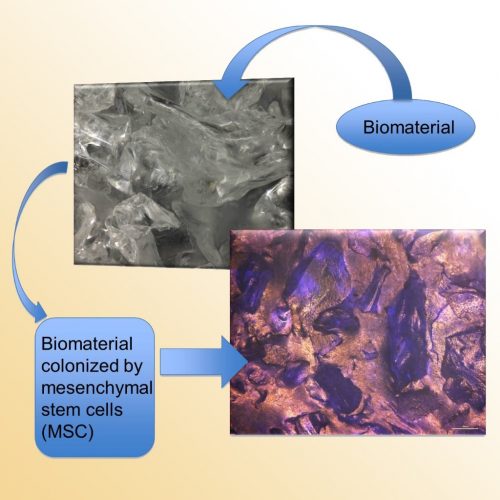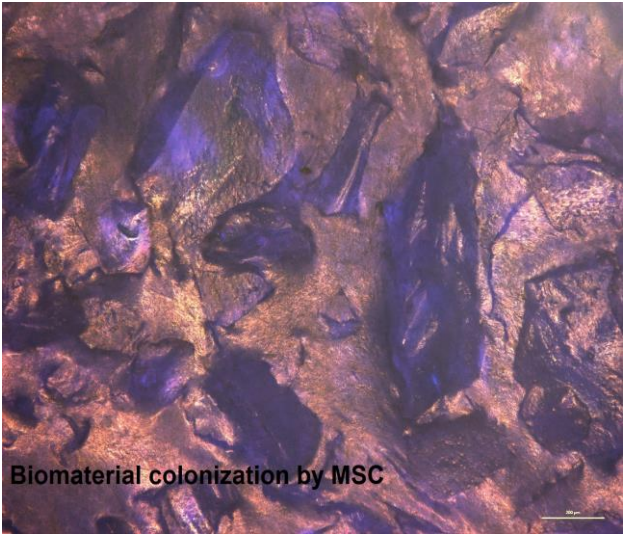
Design and production of a new composition of a bioactive glass with a specific granulometry, able to induce osteogenesis and tissue regeneration.
Design and production of a new composition of a bioactive glass with a specific granulometry, able to induce osteogenesis and tissue regeneration.


Patent status
PENDING

Priority Number
102019000002229

Priority Date
15/02/2019

License
INTERNATIONAL



Problem
Since the world population is dramatically ageing [World Population Ageing report 2017 from the United Nations], the demand for new materials suitable for healing of bone and tissues is exponentially increasing. As a matter of fact, hundreds of millions of people all over the world suffer from pathologies associated with the musculoskeletal system, and this urge the need for materials able to replace damaged human tissues. In the last decades, the interest of materials’ scientists has been focused on the development of high performance materials with enhanced biological response, for orthopaedics, maxillofacial and oral surgery. The EU medical devices sector is a key driver of EU economic growth and employs more than 600,000 people in 25,000 companies (80% are SMEs), generating sales of EUR 610 billion. The European medical technology market is estimated to make up 31% of the world market. It is the second largest medical technology market after the US (about 40%).
Current technology limitations
There are different available solutions in the market in the field of synthetic materials able to replace damaged or missing tissues. The greatest regenerative potential is shown by bioactive glasses, for both hard (such as bone) and soft tissues. However, such materials have important drawbacks such as crystallization upon thermal treatments, which can limit and even undermine bioactivity. On the other hand, thermal treatments are necessary to prepare sintered products, such as bulk samples, scaffolds and coatings. Thus bioactive glasses did not exploit their full potential. The present invention regard a new bioactive glass, with a novel composition (also with therapeutic ions) specifically tailored to achieve an extremely high crystallization temperature, preserving at the same time an excellent bioactivity and biocompatibility.
Our technology and solutions
Il nuovo vetro bioattivo è caratterizzato allo stesso tempo da:
(i) un’altissima temperatura di cristallizzazione;
(ii) ottime caratteristiche biologiche.
La temperatura di cristallizzazione è una delle più alte mai riportate per un vetro bioattivo. La performance biologica è stata misurata con:
(i) test in Simulated Body Fluid;
(ii) biocompatibilità secondo norma ISO10993;
(iii) modello innovativo 3D con cellule mesenchimali staminali da midollo ossseo umano (BM-MSC).
I test hanno dato ottimi risultati in termini di biocompatibilità e performance biologica. Gli ioni rilasciati dal vetro bioattivo hanno stimolato le BM-MSC a differenziarsi, anche in assenza di adeguati fattori di crescita, mettendo in luce l'osteoinduttività del vetro stesso. Sono attualmente in corso test in vivo su animali.
Advantages
1. Thanks to its extraordinarily high crystallization temperature, large processing window, relatively low sintering temperature and high bioactivity, the bioactive glass can be included among the most promising bioglasses for the realization of products whose processing requires a thermal treatment (for example for the production of sintered parts, scaffolds, coatings).
2. Superior biological performance, also due to the therapeutic ions included in the composition. Thus, this material can be advantageously employed for the following applications: Bone regeneration (both in orthopedy and in dentistry) Soft tissue regeneration (for example wound healing) Toothpastes (with bioactive glass as a filler) for dental sensitivity.
Roadmap
Actually, test in animals are being performed. We search a collaboration with a company and/or an institution able to help us with preclinical studies (testing in humans) and with the necessary steps to obtain certification/approval for use and commercialisation. Subsequently we search for a company able to put the product(s) in the market and commercialise it. We would be glad to evaluate to sell the patent to such company.
TRL
Il team


